The Apple Watch Series 9 is a great fitness tracker - but could this cheaper option be even better?
It's a good idea to weigh up the Apple Watch Series 9 vs SE to see which one's right for you when it comes to tracking your fitness, sleep, stress, and more

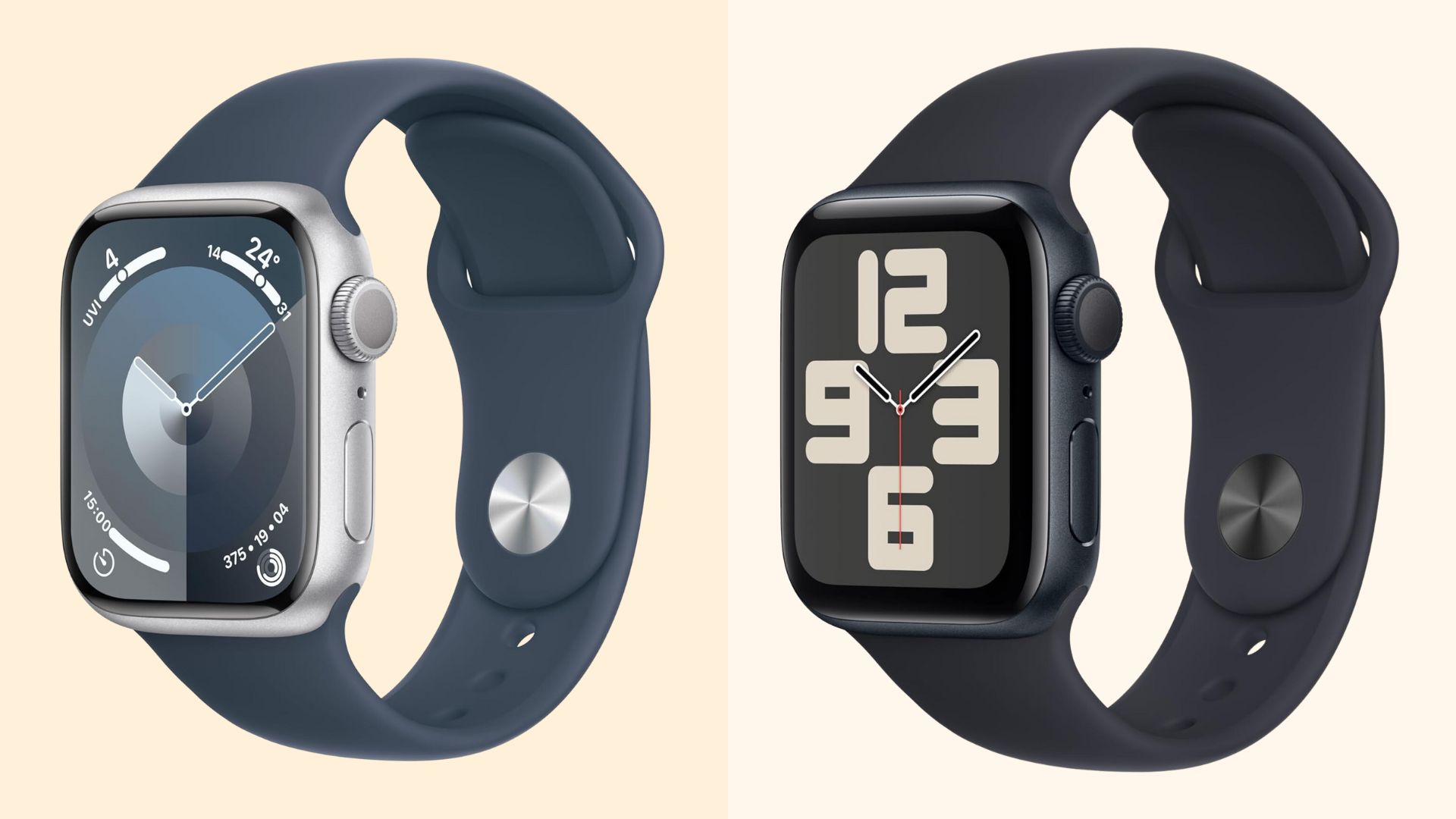
If you're looking to buy a new smartwatch in 2024, you've probably had the Apple Watch Series 9 vs SE debate. The two devices make up two out of three of the brand's smartwatches on sale this year and with a considerable £180 price difference between them, it's a good idea to weigh up the pros and cons of each.
The Apple Watch Series 9 and the Apple Watch SE are joined by the Apple Watch Ultra 2 to create three of the best fitness trackers right now. There's no doubt about it, from their superior lifestyle integration features to the fascinating insights they can offer into our health and wellbeing, any variety of the newest Apple Watch is a great buy.
But it doesn't take a tech whizz to notice that, unlike the Ultra 2, the Apple Watch Series 9 and SE are very similar to each other. From design to some features, you're not alone if you're confused by their similarities. Here, we reveal the main differences between the two and the underrated features of both to help you choose the one right for you.
Apple Watch Series 9 vs SE
An overview
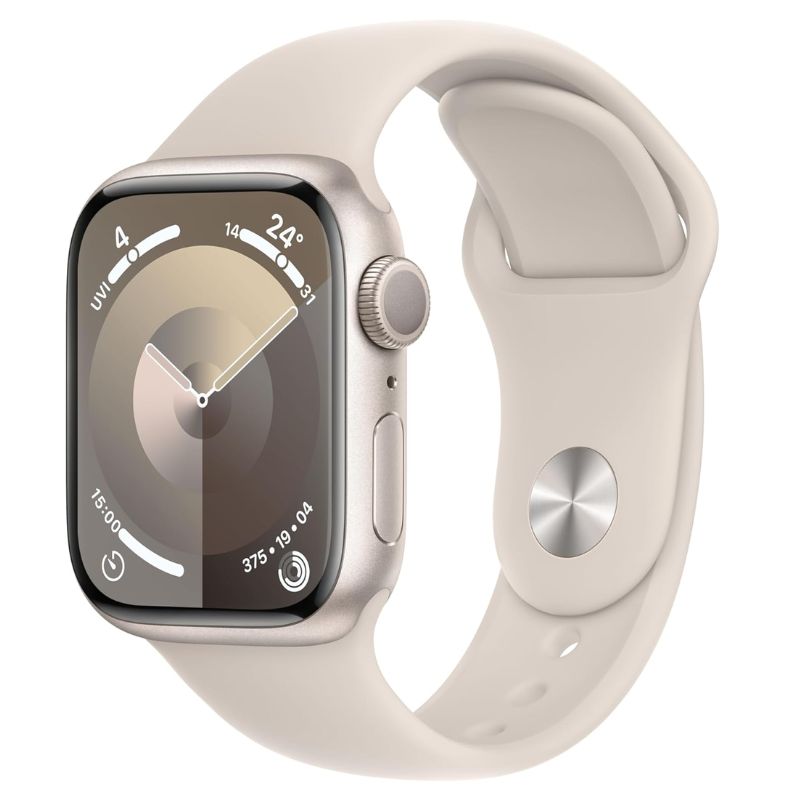
The Apple Watch Series 9 is the latest all-rounder in the brand's collection, offering a brighter display than ever before, a longer battery life in Low Power Mode, two exciting new integrated features to make life easier, and a huge list of health monitoring features Starting at £399 for the aluminium casing, the Apple Watch Series 9 is also the more expensive option of the two.
Buy if: you're looking for a big upgrade from an older model of the Apple Watch or an alternative brand
Avoid if: you don't need advanced fitness tracking features and aren't bothered by the latest feature updates
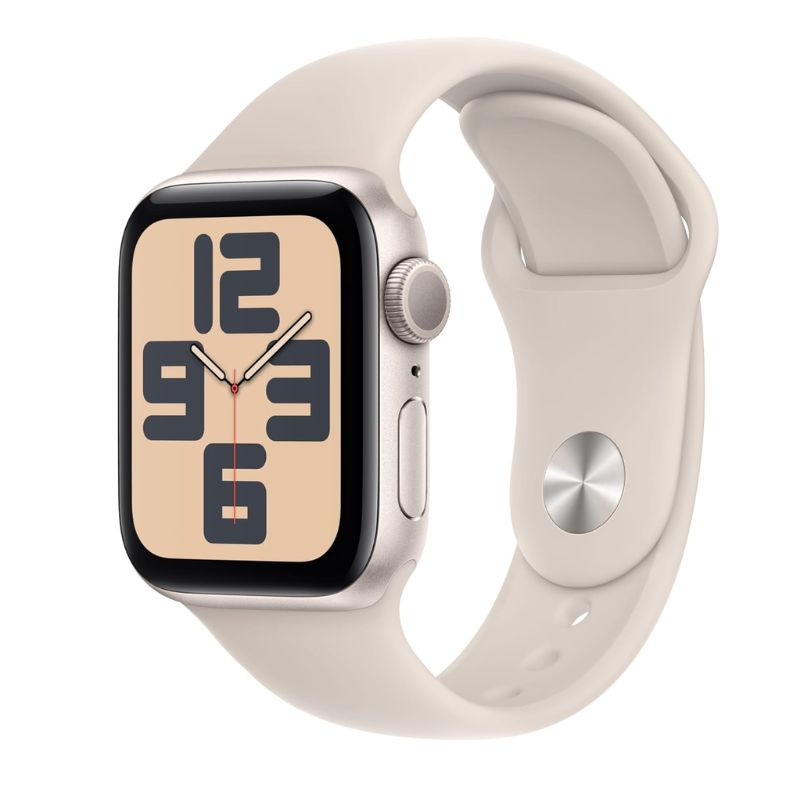
The Apple Watch SE is billed as the brand's entry-level smartwatch and fitness tracker. It covers all the essentials - from tracking your steps to your sleep cycle - without the more premium sensors. extensive colour choices, and longer battery life. At £219 to start though, it's almost £200 cheaper than the Apple Watch Series 9.
Currently on sale at Amazon for £209.
Buy if: you're looking all the best parts of an Apple Watch at a lower price point, and you don't mind the low battery life
Avoid if: you're looking to make serious strides in your fitness as sensors like Sp02 (blood oxygen level tracking) can be useful for this
Design
The design of the Apple Watch Series 9 vs SE stumps many people. But despite initial appearances, this is one of the ways the two devices differ the most.
The Apple Watch Series 9 offers a 45mm or 41mm case in either aluminium or stainless steel. At 45mm or 41mm in height and 28mm in width, it's also relatively rectangular shaped, compared to the square shape of the Apple Watch SE. The SE measures 44mm or 40mm in height by 38mm in height, so although it's only a small difference if you opt for the larger size, it is noticeable on the wrist. The Apple Watch SE also comes with an aluminium casing only, without the sturdier stainless steel option.
When it comes to personalising the Apple Watch, colour plays a big role. Will you go for the minimalist neutral tones or maximalist pink and red? If you prefer bright and bold, your only option of the two is the Apple Watch Series 9 as the SE only comes in the basic offering of Midnight (black), Starlight (gold), and Silver. Of course, you can change the colour of your band with either watch and there are plenty of options available for all sizes - including in the collaborations with Nike and Hermès - but the choice of casing colour is limited.
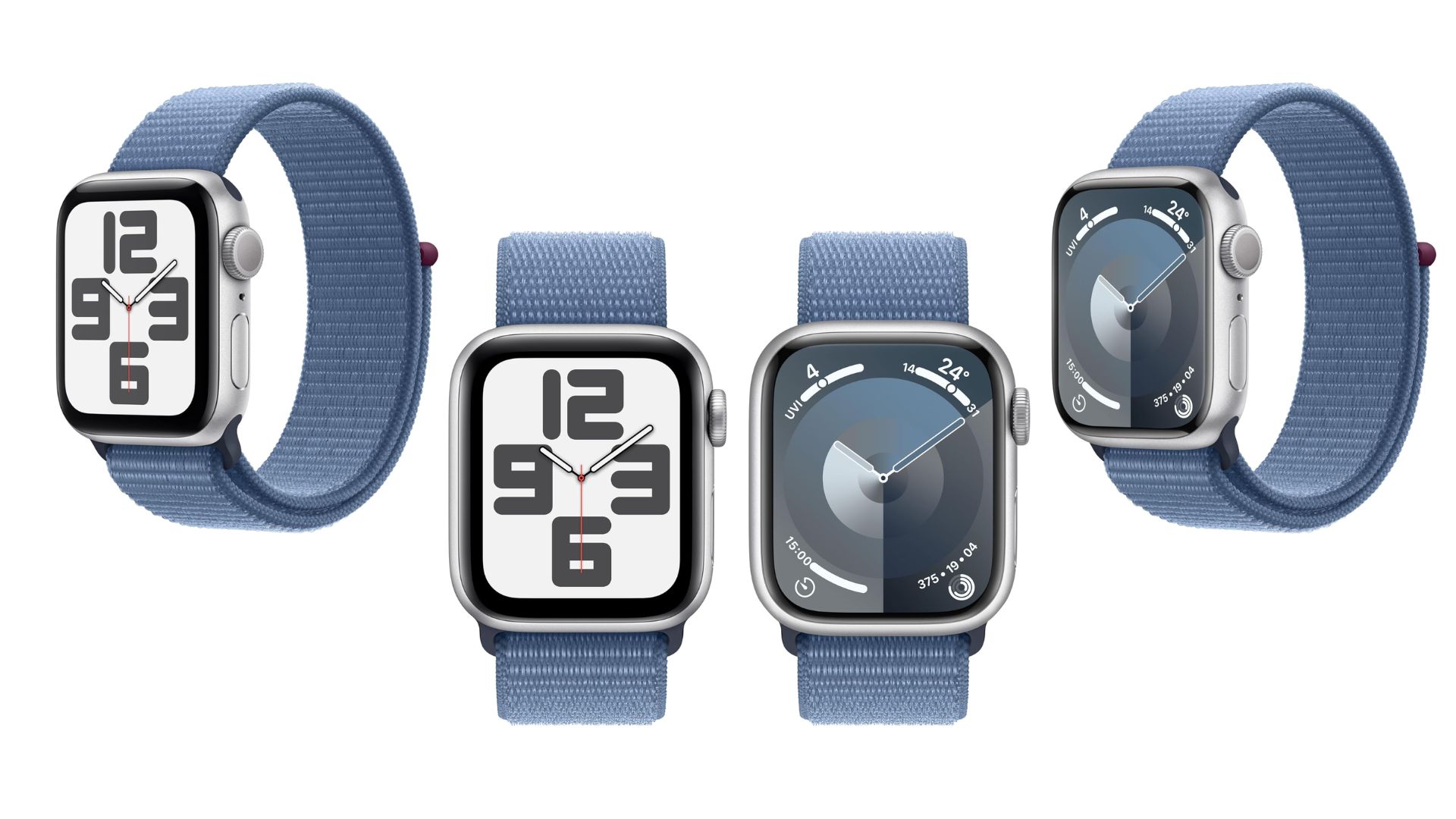
The design of the Apple Watch Series 9 (right) vs SE (left) looks almost the same - with some key differences.
Features
With the announcement of the Apple Watch Series 9 came one impressive new feature: the Double Tap. Part of the S9 SiP, the new chip in the device, the Double Tap feature lets users carry out a whole range of actions on their watch simply by tapping their forefinger and thumb together.
Sign up to our free daily email for the latest royal and entertainment news, interesting opinion, expert advice on styling and beauty trends, and no-nonsense guides to the health and wellness questions you want answered.
You can make the most of all the Apple Watch tips and tricks with this device. For example, answer and end phone calls; pause, end, and resume a timer or stopwatch; play and pause music or podcasts; take a photo with the Camera Remote in the Camera app; and perhaps most importantly for those who enjoy a lie-in at the weekend, snooze an alarm.
The Apple Watch SE doesn't offer this feature but it does host the WatchOS10, the latest software system. This means, regardless of which watch you choose, you can access third-party apps, customise your favourite faces, send and receive calls, messages, and emails, and use Siri faster than ever before with the Apple assistance now hosted directly on the watch.
Apple Watch Series 9 vs SE: Both are great options - it all depends on personal preference. The Apple Watch can make your life easier but of the Double Tap feature doesn't sound like something you want or need and you'd prefer to save the £180, then the Apple Watch SE sounds like it could be the one for you. However, taking the Double Tap in combination with all the other advanced features might mean the Apple Watch Series 9 is a better choice for you.
Health and fitness tracking
Most people choose an Apple Watch over a manual timekeeper to keep an eye on their health and fitness. Whether it's monitoring your step count when doing walking as a workout or trying to learn how to sleep better with insights into your sleep cycle, both the Apple Watch Series 9 and SE can do this.
The big difference here is the ECG (electrocardiogram) and SpO2 (blood oxygen) tracking. The first isn't too important unless you want to use your Apple Watch for monitoring any potential cardiac events - then the Apple Watch Series 9 is a must-have over the SE. The budget-friendly model doesn't have this sensor. It does, however, offer notifications of abnormally high or low heart rates like the Series 9. None of these are diagnostic tools but they offer a useful history of heart health, should you need to see a doctor.
In the same way that the ECG can help keep an eye on our heart health without providing any diagnostic information, the SpO2 blood oxygen sensor can keep an eye on our respiratory health. Most people have a blood oxygen saturation level of at least 90%. However, those with conditions like sleep apnea or lung disease, or those with a respiratory infection, may have a saturation level much lower than this. Your blood oxygen levels can also deliver some useful insights into how your fitness is improving, per a report by Training Peaks, one of the best fitness apps.
Apple Watch Series 9 vs SE: Unless the ECG and SpO2 sensors are particularly important to you for health reasons, or you're looking to examine your cardiovascular fitness in microscopic detail, the Apple Watch SE will be more than enough for tracking your daily step count, exercise, sleep cycles, stress levels, and more.
Many other fitness trackers, including various Fitbit types, also offer SpO2 and ECG sensors so these are also worth considering.
Battery life
Both the Apple Watch Series 9 and the Apple Watch SE promise 18 hours of battery life between charges. In my experience with the Apple Watch Series 9, this 18 hours is also very dependent on how you use the watch. For example, if you spend most of those 18 hours in Workout mode, following a Map route, playing music, or with a high brightness on the display, the battery is going to drop faster.
The big difference in battery life between the Apple Watch Series 9 vs SE, however, is that the advanced Series 9 offers a Low Power Mode. In Low Power Mode, you'll notice the Apple Watch Series 9 loses some of its premium features, however. This includes:
- 'Always On' display - you'll need to raise your wrist to bring the display to life
- Double Tap
- Heart rate notifications for an irregular rhythm, high or low heart rate
- Heart rate measurements in the background
- Blood oxygen measurements in the background
- Workout reminders
Apple Watch Series 9 vs SE: The Apple Watch Series 9 wins out here - but only marginally. While both devices only promise 18 hours of battery life as standard, the advanced watch offers up to 36 hours in Low Power Mode.
If you're struggling to reconcile the price of either Apple Watch with the limited battery life, then it may be worth looking at Fitbit vs Apple Watch. The Fitbit Sense 2 (£219), for instance, offers many advanced health tracking features and promises up to 6 days of battery life with a singular charge.
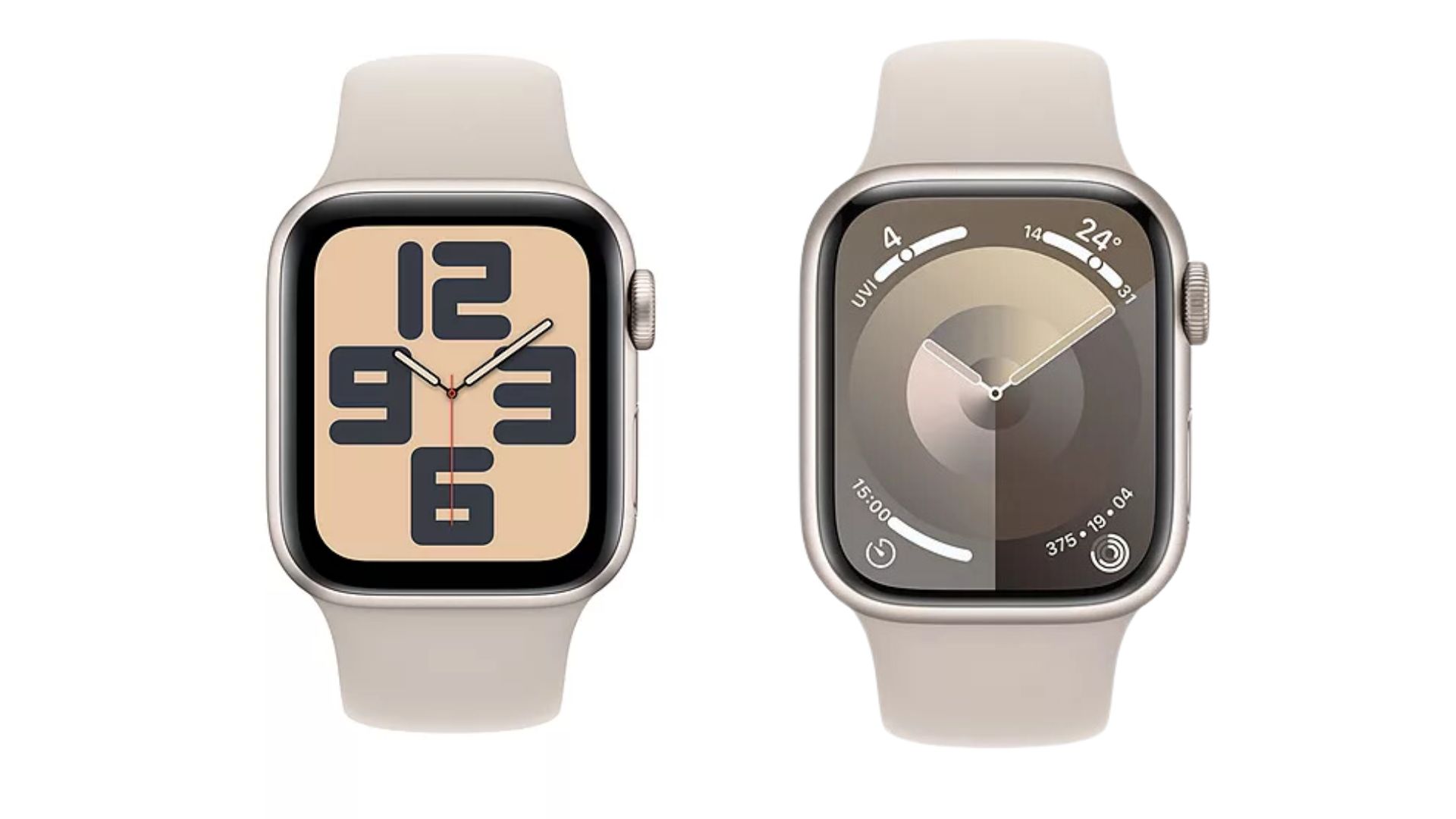
The Apple Watch SE (40mm, left) has a squarer casing with a smaller displace face compared to the Apple Watch Series 9 (45mm, right).
Display
The standout key difference between the Apple Watch Series 9 vs SE in the display is the size. Others will point out that the brightness between the two is significantly different - the Apple Watch Series 9 offers 2,000 nits, double that of the SE - but in testing the Series 9, I didn't find this made too much of a difference day-to-day.
The size difference between the displays is something to consider, however. The Apple Watch SE has a screen size of 1.57 inches, almost half an inch smaller than the 1.9 inches that makes up the screen of the Apple Watch Series 9. The premium model also offers an edge-to-edge screen design, whereas the SE covers some of the screen with a black border. If you're anything like me and would need a larger font than most on your Apple Watch, you may find the Apple Watch SE limits you. If you struggle to see what's on the screen without having to peer at the device, it's going to make it much harder to use the smartwatch day to day.
This is a common problem among many fitness trackers though, including the best Fitbits, given that all the technology needs to fit into a device no larger than the average wrist.
Not only is it larger and brighter though, the Apple Watch Series 9 offers an 'Always On' display so you can see the time on your watch like you would on a manual accessory - although this will limit the battery life even further. The Apple Watch SE has no such function - users need to raise their watch to see the face.
Apple Watch Series 9 vs SE: The Apple Watch Series 9 is a better option when it comes to both the quality and size of the display on the watch.
Price
This is the big stickler and top of the list of things to know before you buy a fitness tracker. The price will ultimately decide which Apple Watch you should buy. The Apple Watch Series 9 starts at £399 in price, for the aluminium casing, rising quickly to £699 for a stainless steel casing.
That's only £100 less than the starting price for the Apple Watch Ultra 2, which features a titanium casing and several more fitness tracking and GPS features, so if these are of interest then the Ultra 2 is worth adding to the consideration list.
The Apple Watch SE (40mm) starts at £219 and, at the time of writing, I've spotted several deals from the likes of Amazon and John Lewis bringing the price down to around £200. Opting for the 44mm hikes the price up to £249, which is the same £30 price difference between the two sizes of the Apple Watch Series 9 as well.
Apple Watch Series 9 vs SE: All in all, there's a price difference of £180 for the two standard models. The advanced Apple Watch Series 9 is the better model should the £399 price tag not put you off - but if this isn't in your budget, the £219 Apple Watch SE is a great alternative choice.
Apple Watch 9 vs SE: Which is right for you?
Taking budget out of the equation for the moment, the Apple Watch Series 9 is the best of the two. It's truly an all-singing-all-dancing fitness tracker. If you've already been working out for a few years and are looking to improve your fitness with minute health-tracking insights, this is the one for you. It also contains the most up-to-date software and unique features, and it's housed in an accessible design that makes it easier to use than ever before.
The Apple Watch SE is most suitable for those who are new to the world of fitness trackers. Perhaps, those who aren't so sure if a fitness tracker is right for them and their health goals in the first place, and definitely anyone who is new to exercise itself so isn't looking for software and sensors that can do it all.
With this in mind, if you are looking to buy a fitness tracker in the coming days or weeks, it's also worth questioning - are fitness trackers worth it in 2024? They aren't suitable for everyone and not everyone needs one. Plus, with more insights than ever before into our health and fitness, trackers and smartwatches of all brands can be a double-edged sword when it comes to learning about our health.

Grace Walsh is woman&home's Health Channel Editor, working across the areas of fitness, nutrition, sleep, mental health, relationships, and sex. She is also a qualified fitness instructor. In 2025, she will be taking on her third marathon in Brighton, completing her first ultra marathon, and qualifying as a certified personal trainer and nutrition coach.
A digital journalist with over seven years experience as a writer and editor for UK publications, Grace has covered (almost) everything in the world of health and wellbeing with bylines in Cosmopolitan, Red, The i Paper, GoodtoKnow, and more.